Vasari, Giorgio -16th Century Italy
As I was reading this famous book on the lives of painters by the Florentine painter and architect Giorgio VASARI, Italian Mannerist Writer and Painter, 1511-1574, who studied under Michelangelo Buonarroti, I thought I would summarize and add pictures... however: A great site was already done here:
- One day someone will write a treatise on those dinner parties whose fortunate conjunction of guests and ideas has changed the course of civilisation.
- Cited no doubt would be that famous gathering in Rome in 1546 during which Cardinal Farnese asked Giorgio Vasari to assemble "a catalogue of artists and their works, listed in chronological order".
- The result was 'The Lives of the Most Excellent Painters, Sculptors and Architects', first published in 1550 in Florence, and revised and extended for a second edition in 1568.
Click on pictures to enlarge, then use back arrow)
The "known as":
RAPHAEL:
Raffaello SANZIO, called RAPHAEL (1483-1520) Italian High Renaissance Painter, 1483-1520
La Vierge à l'Enfant avec le petit saint Jean, diteLa Vierge au voile ou La Vierge au diadème bleu
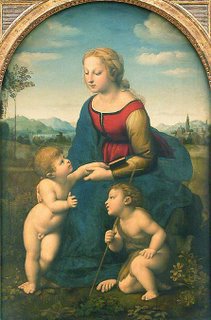 La Vierge à l'Enfant avec le petit saint Jean-Baptiste, dite La Belle Jardinière
La Vierge à l'Enfant avec le petit saint Jean-Baptiste, dite La Belle Jardinière
See other entries on Raphael:
Raphael's Madonna of the Chair
Raphael's Madonna of the meadows
http://cartelen.louvre.fr/cartelen/visite?srv=rs_liste (Louvre)
http://easyweb.easynet.co.uk/giorgio.vasari/raphael/raphael.htm
http://en.wikipedia.org/wiki/Raffaello_Santi
CORREGGIO :
Allegri, known as Correggio (Correggio, Italy, c. 1489-1534)Eve Offering the Apple c. 1526-28R.M.N.
Eve emerging from the turbulence as she offers the apple to the Virgin.
The two Eves: The religious link between the two women has its roots in canonical exegesis: as the new Eve, Mary expiates the sin of her predecessor. The Louvre drawing already contains the elements characterizing the guilty woman of the finished composition: the chromatic impact of the red chalk strokes increases the figure's seductiveness, while the use of white highlighting both reinforces the contrast between light and dark areas and heightens the refinement of the overall rosy tint.
VERONESE
Antonio Paolo Caliari, known as Veronese (Rome, 1528 - Venice, 1588)
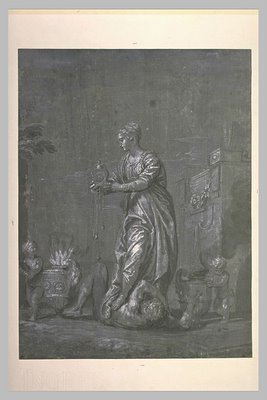 A woman turned towards the left stands upon the fallen figure of a man. In her hands she holds a clock that she seems to consider attentively, heedless of the human carpet beneath her feet. On either side are two smoking urns: fire blazes from the one on the left, while a putto closes a lid upon the other.
A woman turned towards the left stands upon the fallen figure of a man. In her hands she holds a clock that she seems to consider attentively, heedless of the human carpet beneath her feet. On either side are two smoking urns: fire blazes from the one on the left, while a putto closes a lid upon the other.
Veronese Temperance Triumphing over Vice 1581-1582
A life of chiaroscuro
CARAVAGGIO:
Polidoro Caldara, known as Polidoro da Caravaggio
Vasari says of Polidoro "...veramente lavoro i paesi e macchie d'alberi e sassi meglio d'ogni pittore" (an excellent landscape artist, better able than any other painter to render trees and rocks by patches of color).
Landscape with Classical Architecture c. 1530-1534
IL VOLTERRANO
Baldassare FRANCESCHINI, known as IL VOLTERRANO (Volterra, 1611 - Florence, 1689)
Full-length Portrait of the Hunchback Trafedi 1636
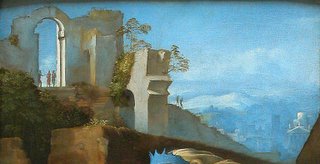
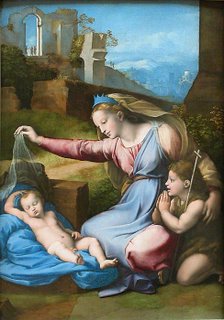
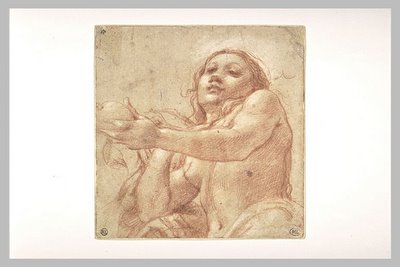
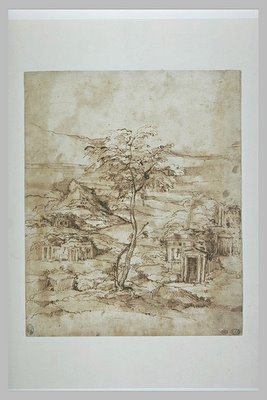
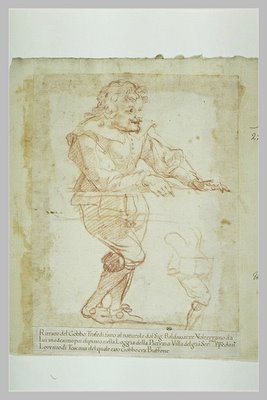

0 Comments:
Post a Comment
<< Home